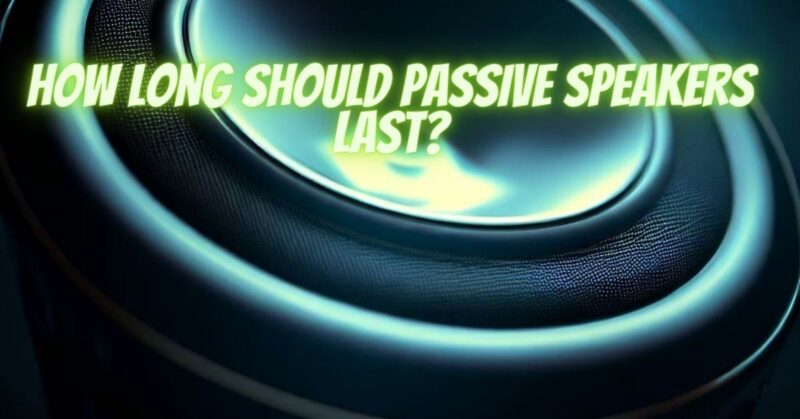Passive speakers, also known as unpowered speakers, are audio devices that require an external amplifier to produce sound. They are a popular choice for home audio systems, studio setups, and various sound reinforcement applications. The lifespan of passive speakers can vary depending on several factors, including build quality, usage patterns, maintenance, and environmental conditions. In this article, we will explore the typical lifespan of passive speakers and the key factors that can impact their durability.
- Build Quality and Materials:
The build quality and materials used in the construction of passive speakers play a crucial role in determining their lifespan. High-quality components, robust enclosures, and durable speaker cones contribute to the overall durability of passive speakers.
- Speaker Components:
Passive speakers consist of various components, such as woofers (low-frequency drivers), tweeters (high-frequency drivers), and crossovers (which divide the audio signal between the drivers). The lifespan of these components can vary, and some may require replacement or repair before others.
- Usage Patterns:
How frequently and intensively passive speakers are used can impact their lifespan. If the speakers are used at moderate volume levels and not pushed to their limits consistently, they are more likely to have a longer lifespan. On the other hand, prolonged usage at high volume levels may subject the speaker components to more stress and wear.
- Maintenance:
Regular maintenance is essential for preserving the performance and longevity of passive speakers. Keeping the speaker cones and drivers clean, checking for loose connections, and ensuring the speakers are in good condition can extend their lifespan.
- Environmental Conditions:
The environment in which passive speakers are placed can affect their lifespan. Exposure to extreme temperatures, high humidity, direct sunlight, and dusty or smoky environments may impact the performance and durability of the speakers.
- Technological Advancements:
Advancements in speaker technology and engineering can influence the lifespan of passive speakers. Newer generations of speakers may benefit from improved materials, design innovations, and manufacturing techniques, potentially increasing their longevity compared to older models.
Typical Lifespan of Passive Speakers:
The typical lifespan of passive speakers can vary widely based on the factors mentioned above. With proper care and maintenance, many passive speaker users report using their speakers for 10 to 20 years or more without experiencing significant decline in performance. However, individual experiences may vary based on usage and environmental conditions.
Passive speakers are designed to provide long-lasting audio performance when properly cared for and used within their intended limits. High-quality build materials, proper maintenance, and favorable environmental conditions can significantly contribute to the lifespan of passive speakers. Whether used for casual listening or professional applications, passive speakers can continue to deliver exceptional audio experiences for many years. As with any audio equipment, taking care of your passive speakers and keeping them in a clean and suitable environment will help ensure their longevity and continued audio excellence.


